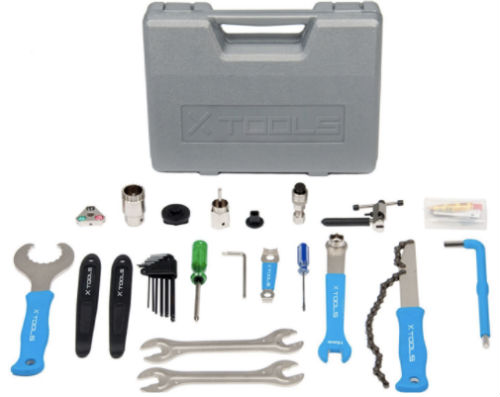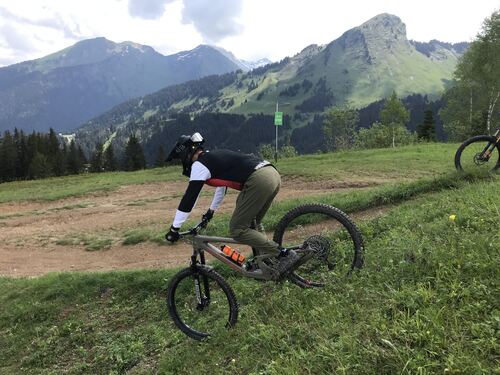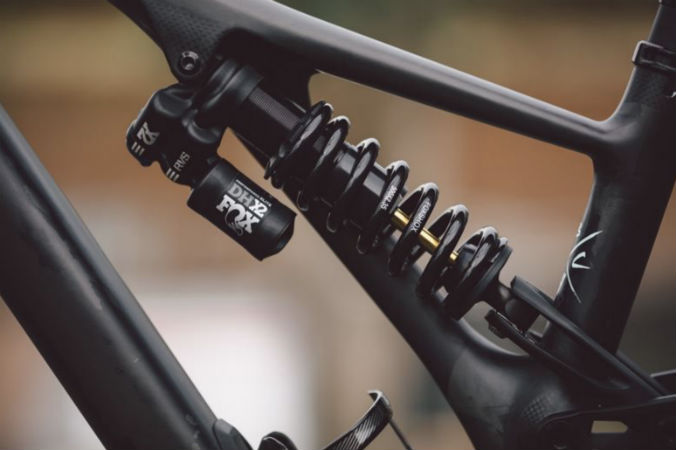First Mountain Bike: Why a Hardtail is Perfect for Beginner Riders
Stepping into the world of mountain biking with your very own first mountain bike is an exhilarating experience. For beginners, the array of choices can be overwhelming, but fear not – the hardtail mountain bike is ideal for a seamless introduction to this exciting sport. Let’s get into the reasons why!
1. Budget-Friendly Beginnings: Starting Right
When venturing into the world of mountain biking, the cost is often a significant factor. A hardtail mountain bike, well-suited for your first foray, is not only friendly on the wallet but also offers a high-quality starting point. As a beginner, making an economic investment that still provides a solid foundation for your mountain biking journey is wise.
A hardtail typically boasts a simpler construction than its full-suspension counterparts, translating into cost savings. With your budget in mind, you can confidently choose a hardtail for your first mountain bike without compromising the overall experience.
2. Maintenance Made Manageable: Less Hassle, More Riding

One of the daunting aspects of venturing into any new hobby is the maintenance it requires. For novice riders, delving into intricate bike components might seem intimidating. This is where the hardtail shines – its straightforward design results in less maintenance overall.
The absence of a rear suspension mechanism simplifies the maintenance process for your first mountain bike. There are fewer moving parts to worry about, making it easier for beginners to perform routine checks and basic repairs. With a hardtail, you can spend more time on the trails and less time in the workshop, ensuring that your early mountain biking experiences are maximally enjoyable.
3. Skill Development: Learning the Art of Mountain Biking
A crucial aspect of becoming proficient in mountain biking is developing essential skills. A hardtail mountain bike is an excellent platform for honing these skills right from the start. The lack of rear suspension encourages riders to choose smoother lines, requiring greater finesse in navigating rough terrains.
Balancing and maneuvering a hardtail on challenging trails demands a heightened sense of control and technique. This hands-on approach to riding enhances your learning curve, allowing you to progressively build the skills necessary to handle more complex trails in the future confidently.
4. Building Confidence: Conquering Trails with Competence

Transitioning from road cycling or even casual riding, a hardtail provides the perfect stepping stone into mountain biking. Its design encourages riders to actively engage with the terrain, cultivating fundamental skills that lay the groundwork for tackling more demanding trails.
The confidence gained from mastering a hardtail prepares you for future biking endeavors. As you become more adept at handling your first mountain bike, you’ll find that you’re not just riding trails but conquering them with a newfound sense of competence and control.
5. Versatility Unleashed: Exploring the Great Outdoors
As a beginner, you’re likely eager to explore a variety of terrains and trails. The hardtail caters to this sense of exploration and adventure. From gentle forest paths to rocky ascents, your first mountain bike adapts effortlessly, allowing you to venture wherever your curiosity takes you.
The hardtail’s versatility ensures that you can comfortably navigate diverse terrains. This adaptability opens up a world of possibilities, allowing you to experience the thrill of conquering new challenges while immersing yourself in the natural beauty of your surroundings.
Transitioning to Full-Suspension

As you gain confidence and experience on your hardtail, you might wonder when to consider upgrading to a full-suspension mountain bike. While a hardtail offers an excellent foundation for beginner riders, there comes a point when your riding style and preferences might lead you to seek the benefits of a full-suspension setup.
Signs of Readiness:
When contemplating the transition, consider these indicators:
- Trail Complexity: If you find yourself tackling increasingly technical and demanding trails, a full-suspension bike might be beneficial. The added rear suspension can provide better traction and control on rough terrain, enhancing your overall riding experience.
- Longer Rides: A full-suspension bike can offer greater comfort as you venture into longer rides, especially over varied terrain. The suspension absorbs impacts, reducing fatigue and allowing you to ride for extended periods without feeling as physically taxed.
- Personal Comfort: If you’re encountering discomfort or pain during rides, especially in your back or wrists, a full-suspension bike’s ability to absorb shocks can alleviate strain and promote a more enjoyable experience.

Advantages of Full-Suspension
Transitioning to a full-suspension mountain bike introduces several advantages:
- Enhanced Comfort: The rear suspension absorbs shocks and vibrations more effectively, resulting in a smoother and more comfortable ride, particularly on rough trails.
- Improved Traction: Full-suspension bikes maintain better traction on challenging surfaces, ensuring your tires stay in contact with the ground for greater control.
- Technical Terrain Mastery: On steep descents, jumps, and technical features, a full-suspension bike’s increased stability and control can boost your confidence and skill progression.
- Reduced Fatigue: The suspension minimizes the impact of bumps and rough terrain, reducing the strain on your body during longer rides.
Making the Transition:
When you decide to switch to a full-suspension mountain bike, take your time to research and test different models. Seek advice from experienced riders or visit local bike shops to gather insights on the best fit for your riding style and goals.
It’s important to note that while full-suspension bikes offer advantages, they also come at a higher cost and might require more maintenance due to the increased number of components. As you transition, be prepared for potential adjustments in your riding technique, as the increased suspension might affect how you approach specific trails and obstacles.
Conclusion: Your Journey Begins with a Hardtail
Selecting a hardtail for your first mountain bike sets the stage for an exciting adventure filled with growth, learning, and exhilaration. Its budget-friendly nature, low-maintenance design, and skill-enhancing features make it an ideal companion as you embark on your mountain biking journey.
Transitioning from a hardtail to a full-suspension mountain bike is a natural progression for riders who’ve developed a solid foundation and are ready to take their skills to the next level. While a hardtail is an excellent starting point for beginners, a full-suspension bike offers enhanced comfort, control, and capabilities, making it an appealing option as you evolve in your mountain biking journey.



